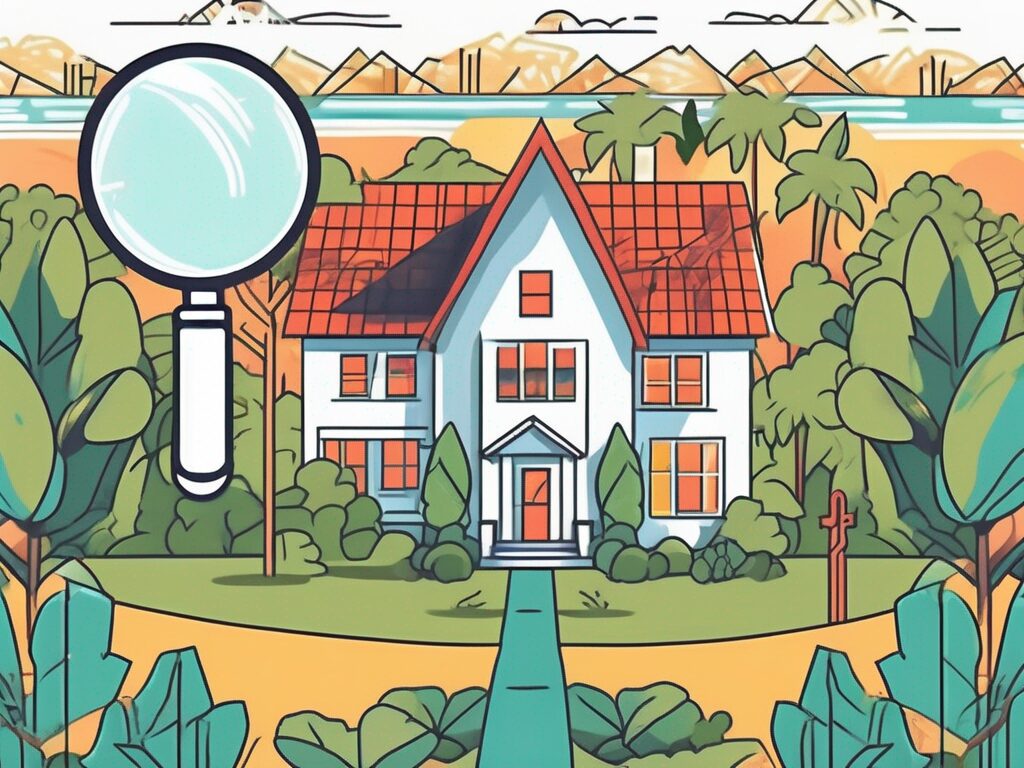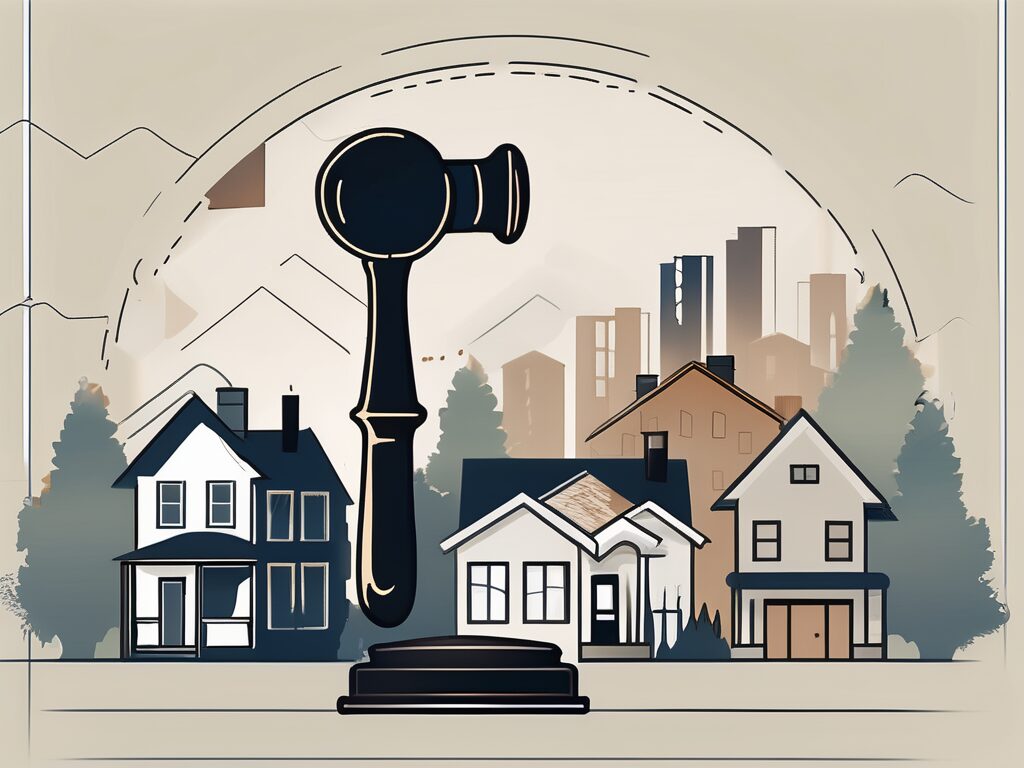
Agent A-Team or Solo Superhero? Finding the Right Real Estate Partner for Your Selling Journey in Wildwood Florida
When it comes to selling your home in Wildwood, Florida,…
January 29, 2024
Homeowners’ associations (HOAs) have long been a topic of contention among residents. While they can provide a sense of community and maintain property values, they often come with a set of rules and regulations that some homeowners find burdensome. If you are part of an HOA where the majority of residents desire change and wish to dissolve it, there are certain steps you can take to achieve this goal. In this article, we will explore the downsides of having an HOA, the challenges of disbanding one, and some alternatives to having an HOA altogether.
As with any organization, there are both pros and cons associated with HOAs. While they can provide a framework for maintaining a harmonious community, they can also become a source of frustration for homeowners. One of the major downsides of having an HOA is the existence of restrictive covenants, conditions, and restrictions (CC&Rs). These CC&Rs dictate what residents can and cannot do with their property, often leading to clashes between homeowners and the association.
Unfair CC&Rs can be a significant issue within an HOA. These rules may be outdated, overly restrictive, or simply not aligned with the desires and needs of the residents. Homeowners can find themselves at odds with the association when they feel the rules unfairly target them or impede upon their rights as property owners. This can create a divisive and tense atmosphere within the community, fostering a desire among residents for change.
For example, imagine a scenario where an HOA prohibits residents from having any pets, including small caged animals like hamsters or birds. This rule may seem excessive to some homeowners who believe that responsible pet ownership should be allowed within certain limits. The disagreement over this particular CC&R can lead to heated debates and a sense of frustration among residents who feel their voices are not being heard.
Furthermore, unfair CC&Rs can also stifle individuality and creativity within a community. For instance, if an HOA restricts residents from painting their homes anything other than neutral colors, it can limit self-expression and prevent homeowners from making their properties unique and personalized. This lack of freedom can be disheartening for those who take pride in their homes and want to showcase their individuality.
Another common complaint about HOAs is the burden of unreasonable dues. Homeowners are required to pay regular fees to cover the costs of maintaining common areas and amenities. However, when these fees become excessive or are mismanaged, it can breed discontent among residents. The financial strain of high dues can be especially challenging for homeowners on fixed incomes or those facing unforeseen financial difficulties.
Consider a situation where an HOA increases the monthly dues by a significant amount without proper justification or explanation. This sudden increase can catch homeowners off guard and put a strain on their budgets. The lack of transparency and accountability in managing these funds can lead to distrust and frustration among residents who question where their money is going and whether it is being used effectively.
Moreover, the burden of unreasonable dues can also deter potential homebuyers from considering properties within an HOA. The fear of continuously rising fees or mismanagement of funds can make individuals hesitant to invest in a community governed by an HOA, impacting the overall property values and marketability of homes within the neighborhood.
In some cases, HOAs may fail to fulfill their responsibilities to the community. This can include neglecting common areas, failing to enforce rules consistently, or misusing funds. When residents witness such failures of the association, they may become disenchanted and lose faith in its ability to represent their best interests. This can further fuel the desire for change within the community.
Imagine a scenario where an HOA neglects to maintain the community pool, allowing it to fall into disrepair. This negligence not only affects the residents’ ability to enjoy the amenities they pay for but also raises concerns about the association’s commitment to fulfilling its obligations. Homeowners may feel frustrated and voice their concerns, demanding accountability and transparency from the HOA board.
In addition, inconsistent enforcement of rules can create a sense of unfairness and favoritism within the community. If some residents are allowed to violate certain rules without consequences while others are strictly reprimanded for similar infractions, it can lead to resentment and a breakdown of trust among homeowners. This lack of consistency in rule enforcement can also create an atmosphere of uncertainty, where residents are unsure of what is expected of them.
Abuse of power within an HOA is a serious matter that can lead to significant discontent among homeowners. Some board members or property managers may use their positions for personal gain or treat certain residents unfairly. These actions erode the trust and sense of community that an HOA should foster. It is crucial for homeowners to recognize such abuses and take steps to address them, either through internal mechanisms or legal means if necessary.
For example, if a board member consistently makes decisions that benefit themselves or their close associates while disregarding the best interests of the community, it can create a toxic environment within the HOA. Homeowners may feel powerless and voiceless, leading to a breakdown in communication and a lack of participation in community activities.
In such cases, homeowners can come together to demand transparency, accountability, and fair treatment from the HOA board. This can involve organizing meetings, forming committees, or seeking legal advice to ensure that the abuse of power is addressed and rectified. By standing up against such abuses, homeowners can work towards creating a more equitable and harmonious community.
If homeowners in a homeowners association (HOA) are seeking change, one way to start is by focusing on the board members who may be hindering progress or acting against the community’s best interests. Removing a board member requires proper procedures and concerted effort from concerned homeowners. Here are some steps you can take:
1. Educate and mobilize fellow residents: In order to initiate change within an HOA, it is crucial to inform fellow homeowners about the issues at hand and the need for change. By creating a united front, homeowners can increase the chances of success in removing a board member who is not serving the best interests of the community. Holding community meetings, distributing informational materials, and engaging in open discussions can help educate and mobilize residents.
2. Review governing documents: Familiarize yourself with the association’s governing documents, such as the bylaws and articles of incorporation. These documents outline the procedures for removing board members and provide the necessary guidelines to follow. Understanding the rules and regulations set forth in these documents is essential to ensure that the removal process is conducted in a legally sound manner.
3. Follow the proper process: Adhering to the processes outlined in the governing documents is crucial when seeking to remove a board member. Typically, this involves calling a special meeting, providing notice to all homeowners, and conducting a vote. It is important to strictly follow the procedures to ensure that the removal process is valid and legally binding.
4. Document grievances: Keeping a record of any incidents or actions by the board member that warrant removal is essential to strengthen your case and demonstrate the need for change. Documenting grievances can include recording instances of misconduct, conflicts of interest, or any other actions that go against the best interests of the community. This documentation will serve as evidence and support your efforts in removing the board member.
5. Seek legal assistance if necessary: If you encounter resistance from the board or face legal complexities during the removal process, it is advisable to consult with an attorney specializing in HOA law. They can provide guidance and ensure that you are following the correct procedures. Legal assistance can be particularly helpful in navigating any potential legal obstacles and ensuring that the removal process is conducted in accordance with applicable laws and regulations.
By taking these steps, homeowners can actively work towards removing a board member who is not serving the best interests of the community. It is important to approach the process with diligence, unity, and a commitment to upholding the values and well-being of the HOA.
While removing an HOA board member is a step towards change, dissolving the entire association altogether presents another set of challenges. Disbanding an HOA involves careful planning, extensive communication, and legal considerations. Here are some aspects to consider:
First and foremost, before making any decisions, it is crucial to evaluate the community’s needs. Take the time to assess whether there are any core functions that must be maintained or replaced. This could include services such as landscaping, maintenance of common areas, or even security measures. It is important to ensure that the dissolution of the HOA does not leave the community without essential services.
Next, it is essential to hold community meetings to engage with fellow homeowners. These meetings provide an opportunity to discuss the advantages and disadvantages of dissolving the association. By facilitating an open exchange of ideas, homeowners can voice their concerns, share their perspectives, and collectively make decisions that are in the best interest of the community as a whole.
Seeking legal guidance is also highly recommended when considering disbanding an HOA. Consulting with an attorney who specializes in HOA law can assist you in navigating the legal requirements and implications of disbanding. They can guide you through the process, ensuring that all necessary steps are taken and that you are aware of any potential legal consequences.
Developing a comprehensive dissolution plan is another crucial step in the process. This plan should outline how the common areas and assets will be handled, including any outstanding debts that need to be addressed. Additionally, if the community decides to transition to a new form of governance, such as a voluntary neighborhood association, this plan should include the necessary steps to make that transition as smooth as possible.
Once all necessary preparations have been made, it is time to vote on the dissolution of the HOA. Holding a vote among homeowners is essential to determine whether the majority shares the desire to dissolve the association. This vote should be conducted in a fair and transparent manner, ensuring that every homeowner has the opportunity to express their opinion and cast their vote.
Disbanding an HOA is a complex process that requires careful consideration and planning. By evaluating the community’s needs, holding community meetings, seeking legal guidance, developing a dissolution plan, and conducting a fair vote, homeowners can navigate the challenges and make informed decisions that will shape the future of their community.
For homeowners who wish to move away from the burdens and conflicts associated with HOAs, there are alternative options to consider:
When forming a neighborhood association, homeowners have the opportunity to come together and build a sense of community. This can be done through regular meetings, where residents can discuss common interests, concerns, and ideas for improving the neighborhood. By organizing events such as block parties, holiday celebrations, and community clean-up days, the neighborhood association can help create a strong bond among residents.
A maintenance association can be a practical solution for homeowners who want to ensure that common areas and facilities are well-maintained without the need for an HOA. By pooling resources and sharing the responsibilities of upkeep, homeowners can collectively maintain parks, playgrounds, swimming pools, and other shared amenities. This approach allows for a more flexible and collaborative approach to community management.
Many local governments recognize the importance of maintaining public spaces and offer services that can benefit homeowners. These services may include regular maintenance of parks, playgrounds, and recreational areas, as well as trash collection and street cleaning. By taking advantage of these services, homeowners can enjoy well-maintained public spaces without the financial burden of an HOA.
Not all communities have an HOA, and for some homeowners, this can be seen as a positive aspect. However, living without an HOA does come with its own considerations:
One of the key aspects of living in a community without an HOA is the need for open communication. Without the structure of an HOA, it is important for homeowners to establish clear lines of communication among neighbors. This allows them to address any issues or concerns that may arise in a collaborative and respectful manner. Whether it’s discussing maintenance responsibilities, noise complaints, or any other community matters, open communication is vital in fostering a sense of unity and cooperation.
In addition to open communication, homeowners in communities without an HOA can also consider creating or participating in neighborhood watch programs. These programs can help ensure the safety and security of the community by encouraging neighbors to look out for one another. By keeping an eye out for any suspicious activities or reporting any concerns to the appropriate authorities, homeowners can work together to create a safe and secure environment for everyone.
Furthermore, without the oversight of an HOA, it becomes the responsibility of each individual homeowner to maintain their property and adhere to local regulations. This includes regular maintenance, keeping yards tidy, and following any applicable rules or guidelines set by the local government. By taking these individual responsibilities seriously, homeowners can contribute to the overall preservation of property values in the absence of an HOA.
Dissolving an HOA when the majority desires change requires careful planning, collaboration, and adherence to legal procedures. By recognizing the downsides of having an HOA, taking action to remove board members, exploring alternatives, or adapting to life without an HOA, homeowners can work towards a community that better aligns with their needs and aspirations.

If you want the Richr team to help you save thousands on your home just book a call.
 Book a call
Book a call